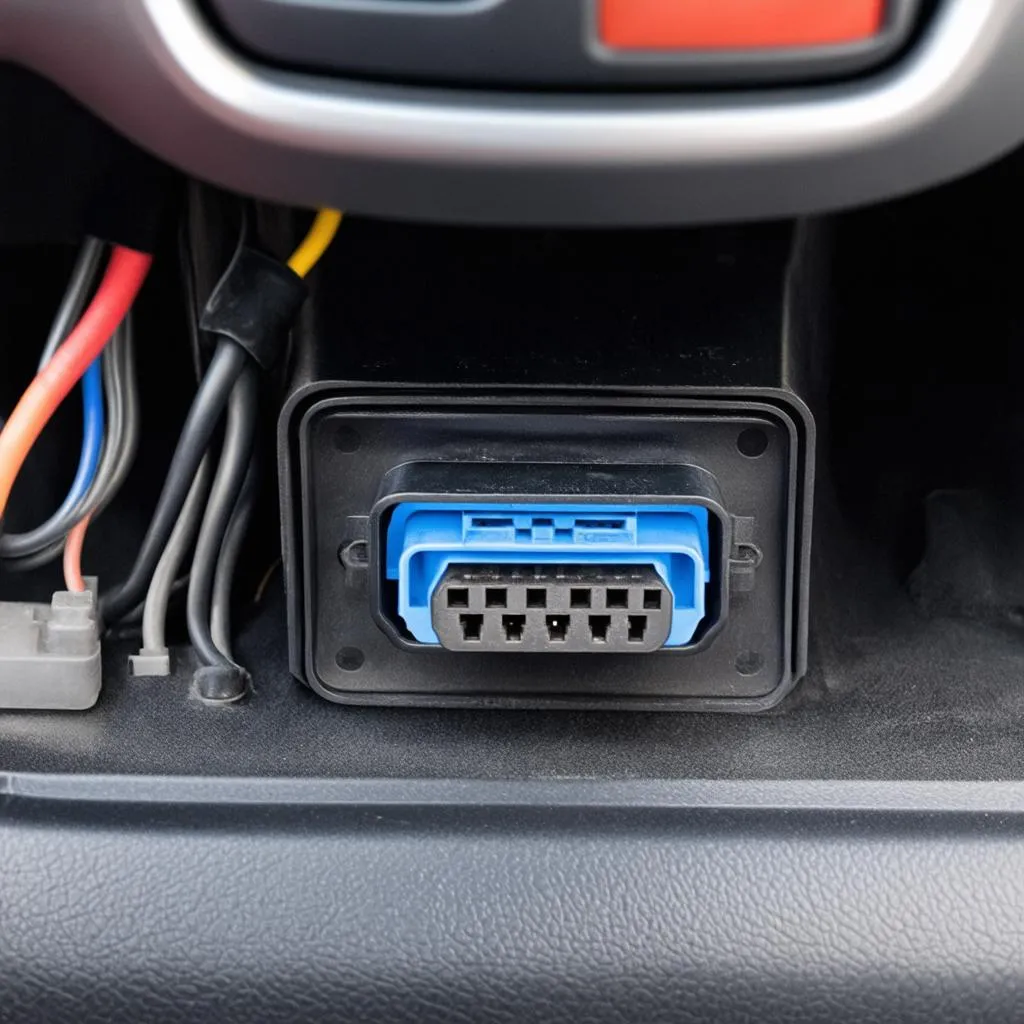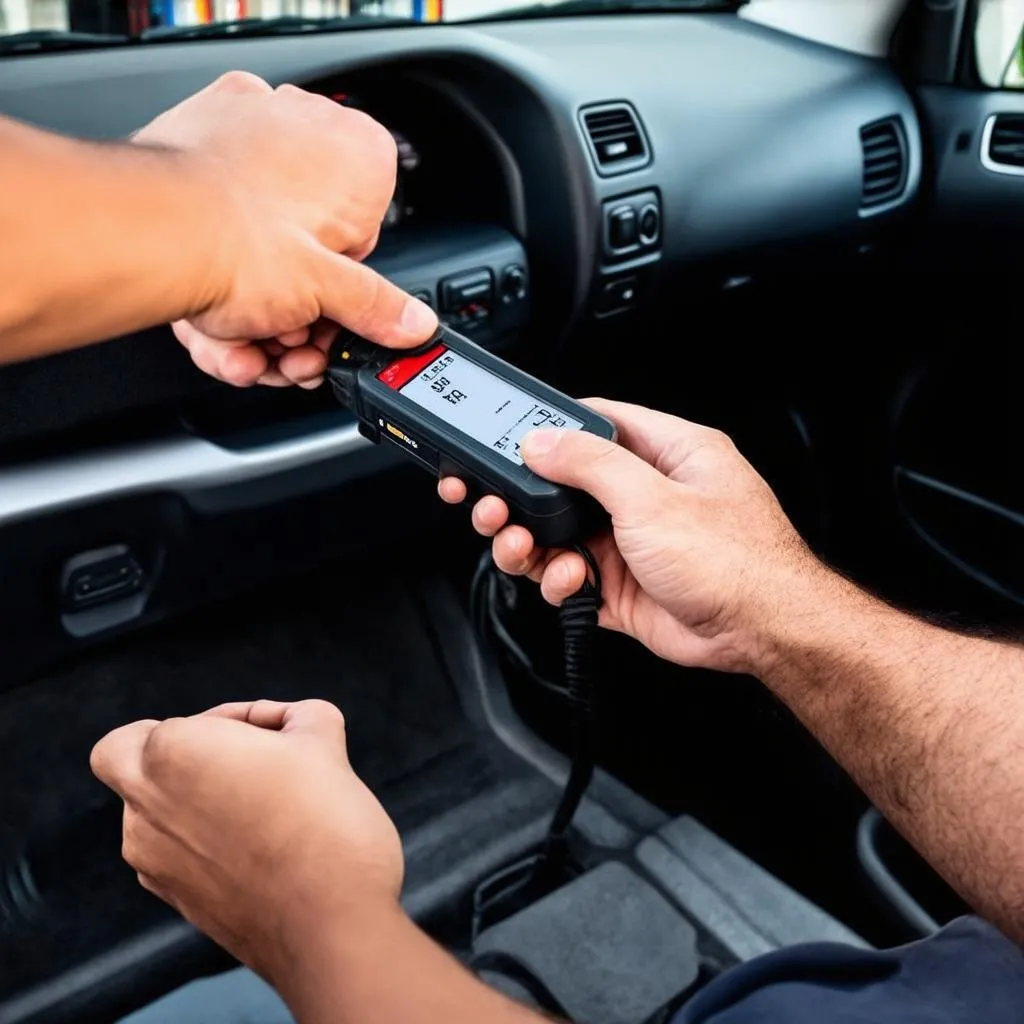Have you ever wondered how mechanics, both professional and DIY enthusiasts, unlock the secrets hidden within your car’s computer system? The answer lies in a small, unassuming port known as the OBD port. Like a hidden doorway to your car’s inner workings, the OBD port, or On-Board Diagnostics port, allows you to tap into a wealth of information about your vehicle’s health and performance. But finding its location can sometimes feel like searching for a lost city! Don’t worry; this article is your treasure map to guide you directly to it.
Decoding the Mystery: Why Finding Your OBD Port Matters
Before we embark on our quest to locate the OBD port, let’s delve into why it’s crucial. Think of your car’s computer system as its brain, constantly monitoring various functions. The OBD port acts as the communication portal, allowing you to:
- Diagnose engine problems: Is your check engine light glaring? The OBD port allows you to connect a scan tool (more on that later!) to retrieve diagnostic trouble codes (DTCs), revealing the root of the problem.
- Monitor performance: Curious about your car’s fuel efficiency or other performance parameters? The OBD port provides access to real-time data.
- Customize settings: From adjusting automatic door locks to tweaking the sensitivity of your car alarm, the OBD port can unlock customization options.
In essence, the OBD port empowers you with knowledge about your vehicle’s health, potentially saving you from costly repairs and frustration.
Unmasking the OBD Port: Common Hiding Places
Now, let’s uncover the elusive OBD port! In most vehicles manufactured after 1996, the OBD port is located within three feet of the steering wheel, typically under the dashboard. However, it’s not always prominently displayed. It might be tucked away behind a panel, hidden beneath the steering column, or even camouflaged within the center console.
Here’s a more detailed breakdown of common hiding spots:
1. Driver’s Side Dash: This is the most common location, often concealed beneath a small removable panel. Run your hand under the dashboard on the driver’s side, feeling for a rectangular-shaped port.
2. Steering Column Area: Some manufacturers cleverly hide the port beneath the steering column. You might need to crouch down and look upwards to spot it.
3. Center Console: In certain vehicles, the OBD port finds refuge within the center console, nestled behind the ashtray or inside a compartment.
4. Fuse Box: Occasionally, the OBD port might share a home with the fuse box, either inside the cabin or under the hood.
Remember, every car model is different. If you’re struggling to locate the port, consult your vehicle’s owner’s manual, which usually provides a diagram highlighting its exact location.
 OBD Port Under Dashboard
OBD Port Under Dashboard
Unveiling the Secrets: Using the OBD Port
Once you’ve located the OBD port, you can unlock a treasure trove of information using an OBD scanner, also known as a code reader. These handy devices come in various forms:
- Basic Code Readers: These affordable scanners retrieve and display DTCs, giving you a general idea of the issue.
- Advanced Scan Tools: Used by mechanics, these tools offer in-depth diagnostics, live data streaming, and even the ability to clear codes.
Connecting a scanner is as simple as plugging it into the OBD port. The scanner then communicates with your car’s computer, retrieving and displaying the desired information.
 Mechanic Using OBD Scanner
Mechanic Using OBD Scanner
Beyond Diagnostics: The Expanding World of OBD
The OBD port’s capabilities extend far beyond simple diagnostics. Today, it serves as a gateway for a wide range of applications:
- Performance Monitoring: Enthusiasts use OBD scanners to track horsepower, torque, and other performance metrics in real time.
- Fleet Management: Companies with vehicle fleets utilize OBD technology to monitor driver behavior, optimize routes, and track vehicle location.
- Insurance Telematics: Some insurance providers offer discounts based on driving habits tracked through OBD devices.
Frequently Asked Questions
Here are some common questions about OBD ports:
1. What if I can’t find my OBD port?
Start by consulting your vehicle’s owner’s manual. If that proves fruitless, online forums dedicated to your car model can be a valuable resource.
2. Are all OBD ports the same?
While most vehicles use the standard 16-pin OBD-II port, some older models might have different configurations.
3. Can I damage my car by using the OBD port?
Using the OBD port correctly poses minimal risk. However, ensure the scanner you’re using is compatible with your car model and avoid forcing connections.
4. What do the different pins on the OBD port do?
Each pin on the OBD port has a specific function, such as power supply, communication, and grounding.
The OBD Port: Your Gateway to Automotive Enlightenment
The OBD port, though often overlooked, is a crucial component of modern vehicles. Understanding its location and capabilities empowers you to take control of your car’s maintenance, diagnose problems efficiently, and even unlock hidden performance potential.
Remember, knowledge is power, and with the OBD port as your guide, you can navigate the world of car maintenance with confidence.
Need Help?
We understand that navigating the world of car diagnostics can be daunting. If you’re encountering issues or need assistance with OBD-related matters, don’t hesitate to contact us via Whatsapp at +84767531508. Our team of automotive experts is available 24/7 to provide guidance and support.
Explore More:
- Learn about external dash cam batteries with OBD-II ports
- Discover the OBD port location for specific models like the Audi A7 or 2011 Kia Optima
- Dive deeper into advanced OBD topics like reading EDC17CP46 through the OBD port
We’re here to empower you with the knowledge and tools you need to keep your car running smoothly.